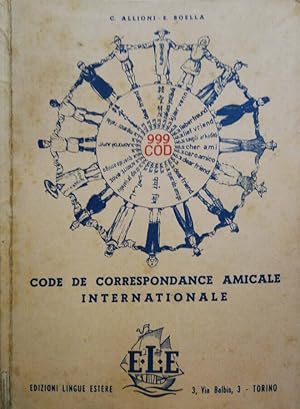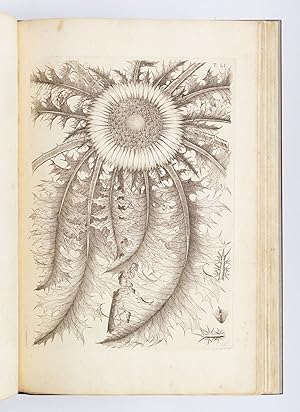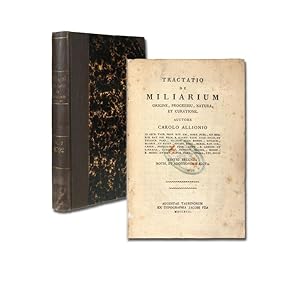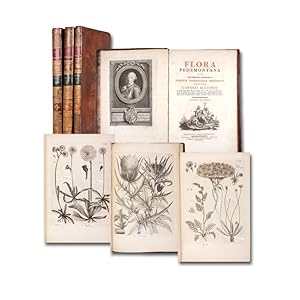allioni carlo (13 Ergebnisse)
Suchfilter
Produktart
- Alle Product Types
- Bücher (13)
- Magazine & Zeitschriften (Keine weiteren Ergebnisse entsprechen dieser Verfeinerung)
- Comics (Keine weiteren Ergebnisse entsprechen dieser Verfeinerung)
- Noten (Keine weiteren Ergebnisse entsprechen dieser Verfeinerung)
- Kunst, Grafik & Poster (Keine weiteren Ergebnisse entsprechen dieser Verfeinerung)
- Fotografien (Keine weiteren Ergebnisse entsprechen dieser Verfeinerung)
- Karten (Keine weiteren Ergebnisse entsprechen dieser Verfeinerung)
- Manuskripte & Papierantiquitäten (Keine weiteren Ergebnisse entsprechen dieser Verfeinerung)
Zustand Mehr dazu
- Neu (3)
- Wie Neu, Sehr Gut oder Gut Bis Sehr Gut (2)
- Gut oder Befriedigend (3)
- Ausreichend oder Schlecht (Keine weiteren Ergebnisse entsprechen dieser Verfeinerung)
- Wie beschrieben (5)
Einband
Weitere Eigenschaften
- Erstausgabe (2)
- Signiert (Keine weiteren Ergebnisse entsprechen dieser Verfeinerung)
- Schutzumschlag (Keine weiteren Ergebnisse entsprechen dieser Verfeinerung)
- Angebotsfoto (11)
Sprache (5)
Gratisversand
- Kostenloser Versand nach USA (Keine weiteren Ergebnisse entsprechen dieser Verfeinerung)
Land des Verkäufers
Verkäuferbewertung
-
Flora Pedemontana: Sive Enumeratio Methodica Stirpium Indigenarum Pedemontii; Volume 1
Verlag: Creative Media Partners, LLC Aug 2024, 2024
ISBN 10: 102255994X ISBN 13: 9781022559943
Sprache: Englisch
Anbieter: AHA-BUCH GmbH, Einbeck, Deutschland
Taschenbuch. Zustand: Neu. Neuware - Discover the botanical wonders of the Piedmont region of Italy with this comprehensive catalog of indigenous plant species. Authored by Carlo Allioni, a prominent 18th-century Italian botanist, this book includes detailed descriptions and illustrations of hundreds of plant species.
-
Flora Pedemontana: Sive Enumeratio Methodica Stirpium Indigenarum Pedemontii; Volume 1
Verlag: Creative Media Partners, LLC Jul 2023, 2023
ISBN 10: 102098600X ISBN 13: 9781020986000
Sprache: Englisch
Anbieter: AHA-BUCH GmbH, Einbeck, Deutschland
Buch. Zustand: Neu. Neuware.
-
999 COD CODE DE CORRESPONDANCE AMICALE INTERNATIONALE
Verlag: Edizioni Lingue Estere, TORINO, 1956
ISBN 13: 2560731876094
Anbieter: Biblioteca di Babele, Tarquinia, VT, Italien
Zustand: BUONO USATO. Francese Volume in lingua francese, tradotto dall'italiano dagli autori. La copertina, in cartoncino morbido, presenta lievi segni di usura ai margini con piccolo strappo alla cuffia inferiore e sporadiche macchioline di fioritura su amo i piatti. Pagine leggermente ingiallite dal tempo. Numero Pagine 59.
-
Tractatio de Miliarium origine, progressu, natura, et curatione.
Verlag: Augustae Taurinorum, excudebat J. J. Avondus, MDCCLVIII (Torino,1758),, Torino, 1758
Anbieter: Libreria Antiquaria Pregliasco, Torino, TO, Italien
Zustand: molto buono. in-8, pp. (16), 130, (2), legatura mezza pelle, tassello al dorso (cerniere stanche). Prima edizione di quest'opera dedicata alle ''migliari'', un tipo di flegmasie esantematiche, e alla loro eziologia e terapia. Carlo Allioni (Torino, 1728-1804), fu grande scienziato e botanico, soprannominato ''il Linneo piemontese'', professore dell'Università di Torino e direttore dell'orto botanico dopo il Donati, fecondo autore di opere di medicina e storia naturale; l'opera che gli fece più onore fu la ''Flora Pedemontana'' pubblicata nel 1785. Buon esempl. (ex-libris della Yale Medical Library; timbro ''Academie de Medecine'' sul secondo foglio). Wellcome Medical Library, II, 34. Bonino, Biblkiogr. Medica Piemontese, II, 433. Book.
-
Tractatio de Miliarium origine, progressu, natura, et curatione.
Verlag: Torino. Augustae Taurinorum, excudebat J. J. Avondus, 1758
Anbieter: Chaco 4ever Books, Montevideo, MO, Uruguay
Encuadernación de tapa dura. Zustand: Muy bueno. In-8, pp. (16), 130, (2), Bound in original cartonee, uncutted unsophisticated copy. First edition of this work on miliary fever ("migliari"), a type of exanthematic inflammation, covering its etiology and therapy. The author, Carlo Allioni (Turin, 1728-1804), was a great scientist and botanist, nicknamed 'the Piedmontese Linnaeus.' A professor at the University of Turin and director of the botanical garden after Donati, he was a prolific author of works on medicine and natural history. His most honored work was the Flora Pedemontana, published in 1785. Wellcome Medical Library, II, 34. Bonino, Biblkiogr. Medica Piemontese, II, 433. W12.
-
Flora Pedemontana, sive enumeratio methodica Stirpium indigenarum Pedemontii.
Verlag: Augustae Taurinorum, Io. Mich. Briolus, 1785,, Torino, 1785
Anbieter: Libreria Antiquaria Pregliasco, Torino, TO, Italien
Zustand: Fine. Tre volumi in folio (mm 405x265), pp. (8), XIX, 344; (4), 366, XXIV, (2); (4), XIV, in antiporta al primo volume ritratto di Vittorio Amedeo III inciso su rame da G.B. Stagnon e 92 splendide tavole botaniche incise su rame da Pietro Peyroleri. Legatura coeva mezza pergamena e angoli, duplice tassello con titoli in oro. Prima edizione di questa straordinaria e prestigiosa pubblicazione sulla flora di montagne e vallate del Piemonte, frutto del lavoro di 25 anni di ricerca. "I due primi volumi contengono la descrizione di 2800 piante, e l'ultimo dà la figura di 257 specie esattamente disegnate, col luogo della nascita, le qualità del suolo, il nome vernacolo piemontese, e le facoltà medicinali di esse piante" (Saccardo, "La botanica in Italia", I, p.13). Si tratta dell'opera più importante del botanico Carlo Allioni (Torino, 1728-1804), estremamente importante dal punto di vista scientifico ed iconografico e considerata uno dei primi erbari regionali. L'Autore, soprannominato "il Linneo piemontese", fu professore dell'Università e direttore dell'orto botanico dopo il Donati, ed uno de' benemeriti della Flora Italica. Rara a trovarsi completa ed in ottimo stato. Pritzel, 108. Nissen, 18. Manno, I, 5233. Saccardo, La Botanica in Italia, I, p.13: «Carlo Allioni, medico torinese nato nel 1728 e morto nel 1804, fu professore di quell' Università e direttore dell' orto botanico dopo il Donati, ed uno de' benemeriti della Flora Italica. L' opera che gli fece più onore fu la Flora Pedemontana pubblicata nel 1785, della quale i due primi volumi contengono la descrizione di 2800 piante, e l' ultimo dà la figura di 257 specie esattamente disegnate, col luogo della nascita, le qualità del suolo, il nome vernacolo piemontese, e le facoltà medicinali di esse piante.». Book.
-
Zustand: NEW.
-
TRACTATIO DE MILIARUM ORIGINE, PROGRESSU, NATURA, ET CURATIONE.
Verlag: Jacobus Joseph Avondus, Torino, 1758
Anbieter: Il Cartiglio di Roberto Cena srlu, TORINO, TO, Italien
Legatura coeva in cartonnage, dedica manoscritta del 1935 al recto del primo foglio di guardia. (16)-130-(2) pagine numerate. Occhiello con titolo breve, frontespizio con marca tipografica silografata, elegante testatinae capolettera silografati alla prima pagina, finalini silografati lungo il testo. Prima edizione di questo breve trattato medico scritto dal grande scienziato e botanico torinese Carlo Allioni, celebre soprattutto per la sua opera Flora Pedemontana del 1785; lasciò anche molti scritti di medicina e fu medico ufficiale di Vittorio Amedeo II. In quest`opera Allioni affronta il tema delle infiammazioni esantematiche (dette \"migliari\") la loro origine e i rimedi per curarle. Carlo Allioni fu professore dell`Università e il direttore dell`Orto botanico di Torino dopo il Donati. Esemplare in ottimo stato di conservazione, sporadiche quanto lievi macchie ossidative ad alcune carte.
-
Flora Pedemontana sive enumeratio methodica stirpium indigenarum Pedemontii [Florae Pedemontanae icones accedit explanatio nomenclaturae botanicae] Tomus primus [tertius].
Verlag: Turin, Giovanni Michele Briolo, 1785., 1785
Anbieter: Bernard Quaritch Ltd ABA ILAB, London, Vereinigtes Königreich
Erstausgabe
EUR 35.045,42
EUR 28,35 für den Versand von Vereinigtes Königreich nach USAAnzahl: 1 verfügbar
In den WarenkorbFirst Edition. Three vols, folio, pp.I: [vii], xix, [1,blank], 344; II: [iv], 366, 24, [2, imprimatur, blank]; III: [iv], xiv, [2,blank], with 92 numbered, hand-coloured copper-engraved botanical plates; title-pages printed in red and black, engraved allegorical vignette to titles, copper-engraved frontispiece portrait of Vittorio AmadeoIII by Stagnon after Molinari to vol.I; a few short closed marginal tears and inkstains, browning to a handful of plates and to pp.1502 of vol.II, sporadic light foxing to plates; nonetheless a handsome set in contemporary cat's paw calf, spines lined with contemporary printed waste and gilt in compartments, contrasting green and gold gilt lettering- and numbering-pieces, edges stained red, green silk place-markers (that of vol.III detached and loosely inserted), remnants of manuscript shelflabels to spines; joints of vol.I cracked, upper hinge splitting, circular dampstain to upper board, corners and extremities of all three vols worn, a few abrasions; contemporary ownership inscription 'Joannis Baptista Balbis' to front free endpapers of vols I and II and to front pastedown of vol.III, with annotations on c.700 pp.in vols I and II and binomial nomenclature to plates in vol.III neatly labelled in the same hand, loosely inserted botanical sample with label dated 1830 in Balbi's hand (vol.II, p.74) and undated note 'Scilla campanulataalla trappola del lupo à la vénerie par le Mr le Marquis avec Molineri' (vol.II, p.162), several small leaves and seed pods preserved between the pages, nineteenth-century bookplate of the Ricasoli-Firidolfi family to front pastedowns.First edition of the earliest Italian regional flora by the 'Linnaeus of Piedmont', here in the extremely rare hand-coloured state and extensively annotated by Giovanni Battista Balbis, the author's pupil and successor at the Botanical Garden of the University of Turin. Carlo Allioni, FRS (17281804) was a physician and professor of botany at the University of Turin, and director of the university's Botanical Gardens established in 1729 as an extension of the medical faculty from 1760 to 1781. The advent of the Linnaean system of taxonomy prompted Allioni to begin cataloguing the species held at the garden as early as 1761, expanding to include a wide range of Piedmontese flora (among them several previously unclassified species), not merely those of medicinal significance; he and Linnaeus corresponded at length, and Linnaeus named the genus Allionia for him in 1753. Allioni's Florae Pedemontanae, the culmination of twenty-five years of research, was published in three volumes, the first two listing 2,800 plants divided into twelve classes, and the third containing ninety-two magnificent botanical plates illustrated by Francesco Peyrolery and engraved by his son Pietro, depicting 237 exotic and native Piedmontese species; the hand-coloured state is extremely rare.The gardens continued to flourish in the nineteenth century and reached their height under Giovanni Battista Balbis (17651831), Allioni's successor, who recorded over five thousand species in his 1812 catalogue. Balbis has annotated nearly every page of the text volumes, providing for each species cross-references to Linnaeus, Carl Ludwig Willdenow, Carlo Antonio Lodovico Bellardi, and Dominique Villars, as well as to other works of Allioni's and his own; he adds common names in French and occasionally in Italian, in a few places corrects Allioni, and adds in the names of subspecies not included in the work, such as Carex davalliana, discovered fifteen years after the publication of the Flora Pedemontana, and Veronica allionii, named for the author. Several fragments of petals, leaves, and seed pods have been preserved between the pages, perhaps something of an occupational hazard for a botanist; Balbis has rather more deliberately inserted a large sample between p.74 and p.75 of vol.II, with an accompanying notecard dated 1830, a year before his death, identifying the specimen as a Schizanthus porrigens, a species of butterfly flower native not to Piedmont but to central Chile. A second note, inserted at p.163, mentions a Scilla campanulata (Spanish bluebell) found whilst on a hunt with Ignazio Molineri (17411818), a close collaborator of Allioni's and head gardener at the Botanical Garden of Turin.Brunet I, cols 1901 ('les exemplaires avec planches coloriées sont plus chers que les autres'); Graesse I, p.81; Nissen I, p.154; Pritzel, p.108 ('Florae Pedemontanae exempla tabulis coloratis rarissime occurrunt'); Sitwell, pp.67 and 69 ('the coloured state is extremely rare'). On Allioni and Balbis, see Guglielmone and Siniscalco, 'L'orto botanico dell'Università di Torino', in Studi di Museologia Agraria 61 (2021), pp.5164. Language: Latin.
-
FLORA PEDEMONTANA SIVE ENUMERATIO METHODICA STIRPIUM INDIGENARUM PEDEMONTII
Verlag: Michael Briolus, Turin, 1785
Anbieter: Phillip J. Pirages Rare Books (ABAA), McMinnville, OR, USA
Erstausgabe
FIRST EDITION. 410 x 270 mm. (16 1/8 x 10 5/8"). Volume II with pp. 3-4 bound before pp. 1-2, but complete. Three volumes. INVENTIVE AND ELEGANT BROWN CRUSHED MOROCCO BY ANNIE BOIGE (stamp-signed "A. Boige" on front pastedown and dated 1996 on rear pastedown), upper covers cleverly encrusted with botanical specimens (leaves or branches), smooth spines with silver titling, leather hinges, watermarked light gray endpapers. Housed together in the original suede-lined brown cloth drop-back box, suede-covered separators preventing contact between volumes. WITH engraved frontispiece portrait of the king of Sardinia in volume I, engraved allegorical vignette on title pages, and 92 FINE ENGRAVED PLATES ILLUSTRATING 237 BOTANICAL SPECIES. A Large Paper Copy. Cleveland Collections 557; Dunthorne 6; Sitwell, "Great Flower Books," p. 67, 69; Nissen BBI 18. âOne plate with minor repair to fore-edge margin, another with tiny rust hole (not touching image), half a dozen plates with insignificant smudges made during the printing process, other trivial imperfections, but A VERY FINE COPY, clean, fresh, and wide-margined, in a flawless binding. This is a major work of 18th century botany, describing more than 2,800 species of plants found in Italy's Piedmont region, illustrating 237 previously unknown specimens, and--crucially--classifying them all according to the new Linnean system, becoming one of the first regional botanicals to use that taxonomy; as a bonus, our copy comes in a particularly appropriate and charming binding with prominent botanical design elements. "Flora Pedemontana" was the chief work of Italian physician Carlo Allioni (1728-1804), professor of botany at the University of Turin and director of its natural history cabinet and botanical garden. The illustrations were drawn and engraved by the botanical garden's resident artist, Francesco Peyroleri, and his son Pietro. Our flora is also an important source of information on Alpine flowers. The modern binding is by an artisan who was proclaimed the "Grande Dame of French bookbinding" by the journal "Art & Métiers du Livre." Annie Boige trained at the Estienne School and at the Vésinet Applied Art Workshop before establishing her atelier in 1985. An art bookbinder, she is noted for her monochrome color schemes and her use of beautiful leathers and vegetal materials, a felicitous choice here.
-
Flora Pedemontana sive Enumeratio methodica stirpium indigenarum Pedemontii auctore Carolo Allionio,. Tomus primus [-tertius]. 3 vols. First edition.
Verlag: [Turin, Italy]: Augustae Taurinorum Excudebat Joannes Michael Briolus R. Scientiarum Academiae Impressor et Bibliopola, 1785
Anbieter: Wittenborn Art Books, San Francisco, CA, USA
Zustand: Good. 3 folio volumes, 26.5 x 40.25 cm., later brown half-shagreen with matching corners.Vol. 1: [8], XIX, [1], 344 p., [1] c. di tav. : ritr. calcogr.; Segn.: [pi] [chi] * *1-*4 A-4R Vol. 2: [4], 366, xxiv, [2] p.; Segn.: [pi] a-d A-5F Vol. 3: Florae Pedemontanae icones accedit explanatio nomenclaturae botanicae auctore Carolo Allionio; [4], XIV, [2] p., LXXXXII c. di tav. : ill. calcogr.; Segn.: [pi] a-d (carta d2 bianca).A portrait of Victor Amédée III, King of Sardinia, to whom the book is dedicated, in vol.1 vignette on the titles and 92 plates engraved by Pietro Peiroleri after Francesco Peyrolery in vol. 3.Provenance: Rubber stamp ex libris on the verso of some pages and all the plates: Bibliotheca Societatis medicae edinensis = Royal Medical Society of Edinburgh. "Over the course of three sales at Sotheby's in London in 1969, the library of the Royal Medical Society of Edinburgh was dispersed. The Society was founded in 1734 and had built up substantial holdings of important medical and scientific texts. By the mid 1960s, faced with inadequate facilities and changes in the focus of the organization, the decision was made to relinquish the library at auction.The librarian of the Middleton Health Sciences Library at the time was Helen Crawford, who undertook the task of obtaining as many relevant titles as possible after being contacted by Anthony Rota of the Bertram Rota booksellers firm in London. Due to the amount and complexity of the offerings, she traveled to London to personally attend the sales. Crawford's efforts in preparing for the auction in Wisconsin, then participating in it in London allowed the University of Wisconsin to successfully acquire a substantial portion of the books offered. She wrote an engaging account of her experiences for the Bulletin of the Medical Library Association in 1970, describing the sale as ?a protracted courtship of a lot of books, with all the conventional elements of suspense, competition, pursuit over great distances, and, finally, conquest.?.Pritzel, 108. Nissen,BBI 18. Manno, I, 5233. Brunet, I, 190-191. Graesse, I, 81. Sacheverell Sitwell e Wilfrid Blunt, Grandi libri di fiori, p. 69. Dunthorne, 6. Stafleu, 100. Cfr. Mario Gliozzi in D.B.I., II, 1960; Dunthorne 6; Great Flower Books p. 47. .OCLC Number: 493234736:& 883621259.Front. stampati in rosso e neroVignetta calcogr. sui front.; ritratto di Vittorio Amedeo III re di Sardegna inciso da Giovanni Battista Stagnon tra i fascicoli [pi] e [chi] del volume 1; tavole disegnate ed incise da Pietro e Francesco PeyroleryTit. degli occhietti: Caroli Allioni Flora Pedemontana tomus primus [-tertius]Faux-titre : "Caroli Allionii Flora Pedemontana. Tomus primus [-tertius]"Titre du tome III : "Florae pedemontanae icones accedit explanatio nomenclaturae botanicae"E?pître dédicatoire adressée au roi de Sardaigne Victor Amédée III par Carlo AllioniVignette aux titres gravée sur cuivreTitres en rouge et noirEn frontispice du tome I, portrait de Victor Amédée III gravé sur cuivre par Giovanni Battista Stagnon d'après la peinture de Giovanni Domenico Molinari. Les 92 planches du tome 3 sont gravées sur cuivre par Pietro Peiroleri d'après les dessins de son père Francesco PeyrolerySig. [ ](4), *(2), *1-*4(2) A-Rrrr(2) ; [ ](2), A-Fffff(2) ; [ ](2), a-d(2).
-
Tractatio de miliarum origine, progressu, natura et curatione. Editio secunda notis, et additionibus aucta.
Verlag: Turin Fea, 1792
Sprache: Deutsch
Anbieter: Antiquariat Gerhard Gruber, Heilbronn, Deutschland
(20 x 13,5 cm). XIV, 195 (4) S. Halbleinwandband um 1900. Maßgebliche Ausgabe seines medizinischen Hauptwerkes über die Fieselkrankheit, gegenüber den Ausgaben von 1758 und 1772 um über 60 Seiten erweitert. - Allioni "hält die Krankheit für contagiös und nimmt bei ihr ein specifisches Miasma an" (Hirsch). - Titel leicht angestaubt und stockfleckig sowie verso (etwas durchschlagend) gestempelt, sonst gut erhalten. - Hirsch/H. I, 95; Wellcome II, 34; Blake 11.
-
Flora Pedemontana sive enumeratio methodica stirpium indigenarum Pedemontii. 2 Textbände und Tafelband in zus. 3 Bänden.
Verlag: Turin Brioli, 1785
Sprache: Latein
Anbieter: Antiquariat Gerhard Gruber, Heilbronn, Deutschland
EUR 5.060,00
EUR 40,00 für den Versand von Deutschland nach USAAnzahl: 1 verfügbar
In den Warenkorb(41,5 x 27 cm). (8) XIX, 344 S./ (4) 366, XXIV (1) S./ (4) XIV (2w) S. Mit gestochenem Porträt, 3 gestochenen Titelvignetten und 92 Kupfertafeln. Lederbände der Zeit mit reicher Rückenvergoldung. Einzige Ausgabe seines Hauptwerkes, das ihn auch international berühmt machte. Er beschreibt darin 2813 Pflanzenarten aus dem Piemont, darunter 237 bis dahin unbekannte. - Allioni (1728-1804), Professor für Botanik in Turin, war Direktor des dortigen Botanischen Gartens und seit 1758 Mitglied der Royal Society. Er stand mit Linné in Kontakt und war einer der ersten Vertreter von dessen binärer Nomenklatur. - Die lateinischen Namen der Pflanzen sind von alter Hand auf Papierstreifen geschrieben und neben die Abbildungen montiert. - 1789 erschien noch ein Appendix mit 53 Seiten und 2 Tafeln, der hier (wie bei fast allen nachweisbaren Exemplaren) nicht beigebunden ist. - Leicht gebräunt. Einbände restauriert, sonst breitrandig und gut erhalten. - Nissen BBI 18; Stafleu-Cowan 100; Pritzel 108.










![Bild des Verkäufers für Flora Pedemontana sive enumeratio methodica stirpium indigenarum Pedemontii [Florae Pedemontanae icones accedit explanatio nomenclaturae botanicae] Tomus primus [tertius]. zum Verkauf von Bernard Quaritch Ltd ABA ILAB](https://pictures.abebooks.com/inventory/md/md32127388150.jpg)

![Bild des Verkäufers für Flora Pedemontana sive Enumeratio methodica stirpium indigenarum Pedemontii auctore Carolo Allionio,. Tomus primus [-tertius]. 3 vols. First edition. zum Verkauf von Wittenborn Art Books](https://pictures.abebooks.com/inventory/md/md31319866170.jpg)

